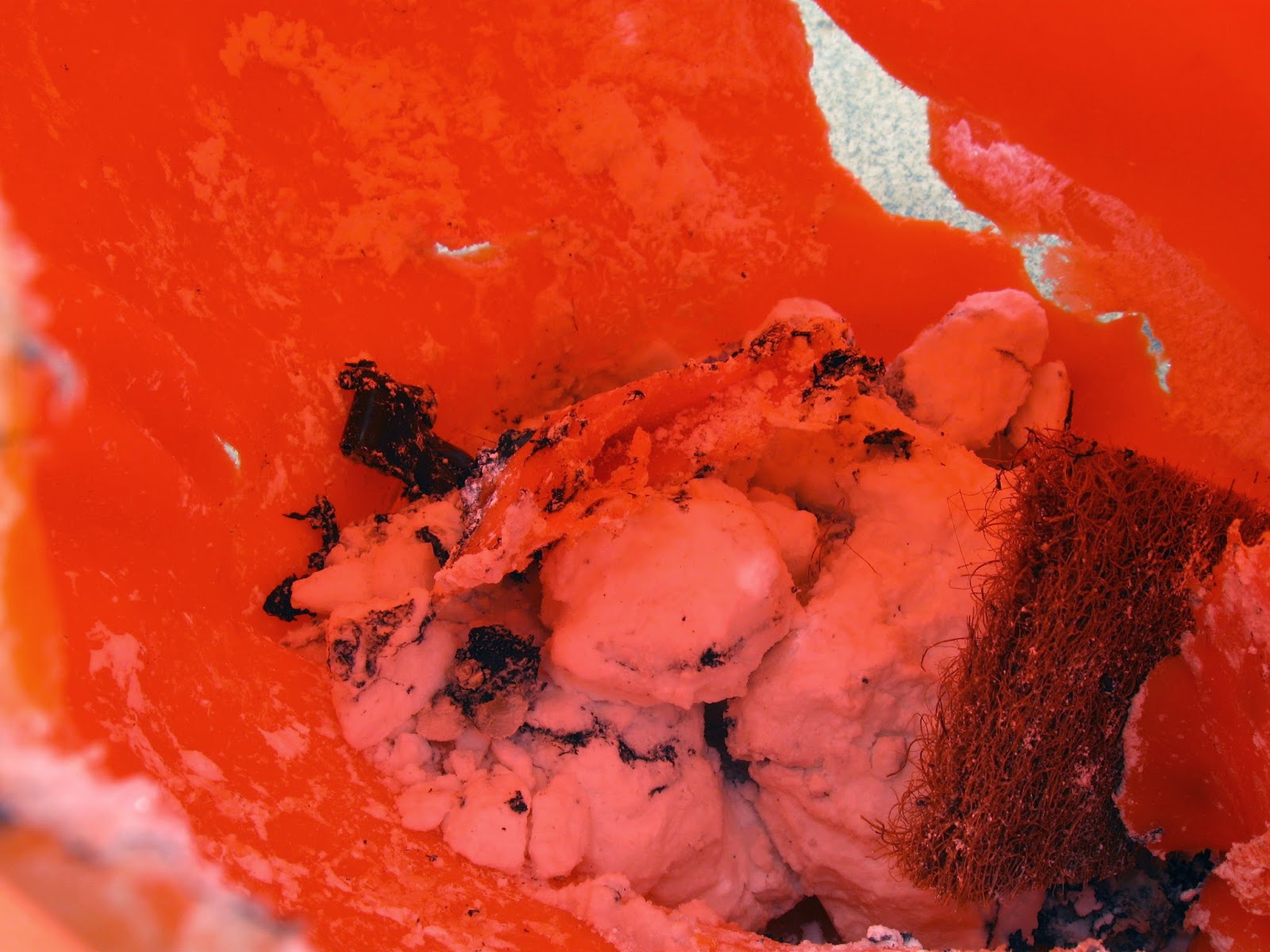Let's do some damage: Part 2
We recovered three of the landers yesterday - basically everything except the respiration lander. The baited camera, baited trap, and plankton pump all need to stay down for 24 hours at a time, while the respiration lander stays down for 48.
Anyway, I suppose I may have been a little overzealous in my last post, describing how we were going to "do damage" to the deep seafloor, because the sea decided to rebel. It heard my words and lashed back. The deep did damage to us.
You see, one of the floats on the fish trap lander imploded. It just couldn't handle the pressure of the deep sea anymore. We could tell something was wrong soon after calling the lander to the surface with the acoustic release, because the trap was rising much more slowly than normal. The trap has four floats, so with one of them rendered useless, it only had 75% of its normal floatation.
Thankfully, only one of the floats was affected, because floats usually give out in groups. When one implodes, it sends out a shock wave that destroys anything in its range, including the other floats. In this case, the floats were spaced far enough apart that none of the others were damaged. Phew!
The floats we use are glass spheres housed in orange plastic covers. When we got the lander on board, we could see there was a big gash in the orange cover, but when we peeked inside, there was no glass sphere to be found. The entire thing had been converted to glass powder. That, my friends, is what 400 atmospheres of pressure will do to you.
If you're interested in hearing a plastic float implosion and the subsequent shock waves, check out the audio library of the ALOHA cabled observatory. One of their hydrophones captured the sound of an imploding float off the coast of Hawaii: http://aco-ssds.soest.hawaii.edu/ACO/media.html
Anyway, I suppose I may have been a little overzealous in my last post, describing how we were going to "do damage" to the deep seafloor, because the sea decided to rebel. It heard my words and lashed back. The deep did damage to us.
 |
| Gnarly. |
 |
| Glass powder - the remnants of an imploded float |
The floats we use are glass spheres housed in orange plastic covers. When we got the lander on board, we could see there was a big gash in the orange cover, but when we peeked inside, there was no glass sphere to be found. The entire thing had been converted to glass powder. That, my friends, is what 400 atmospheres of pressure will do to you.
If you're interested in hearing a plastic float implosion and the subsequent shock waves, check out the audio library of the ALOHA cabled observatory. One of their hydrophones captured the sound of an imploding float off the coast of Hawaii: http://aco-ssds.soest.hawaii.edu/ACO/media.html
Comments
Post a Comment